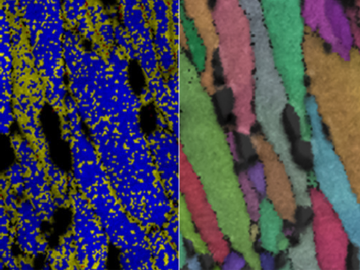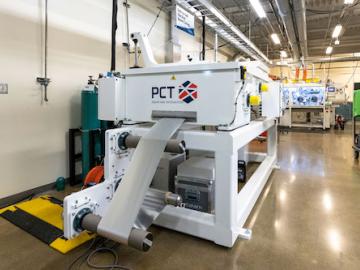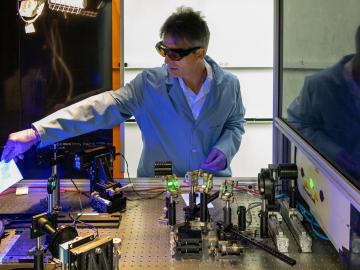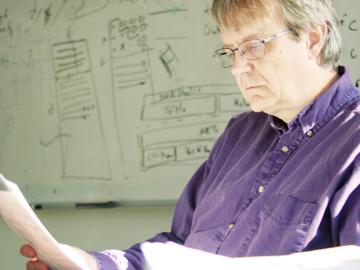
Using neutrons to see the additive manufacturing process at the atomic level, scientists have shown that they can measure strain in a material as it evolves and track how atoms move in response to stress.

Using neutrons to see the additive manufacturing process at the atomic level, scientists have shown that they can measure strain in a material as it evolves and track how atoms move in response to stress.

ORNL, a bastion of nuclear physics research for the past 80 years, is poised to strengthen its programs and service to the United States over the next decade if national recommendations of the Nuclear Science Advisory Committee, or NSAC, are enacted.

ORNL is leading two nuclear physics research projects within the Scientific Discovery through Advanced Computing, or SciDAC, program from the Department of Energy Office of Science.

Andrea Delgado is looking for elementary particles that seem so abstract, there appears to be no obvious short-term benefit to her research.

ORNL researchers have identified a mechanism in a 3D-printed alloy – termed “load shuffling” — that could enable the design of better-performing lightweight materials for vehicles.

Researchers at the Department of Energy’s Oak Ridge National Laboratory and their technologies have received seven 2022 R&D 100 Awards, plus special recognition for a battery-related green technology product.

A multidisciplinary team of scientists at ORNL has applied a laser-interference structuring, or LIS, technique that makes significant strides toward eliminating the need for hazardous chemicals in corrosion protection for vehicles.

More than 1800 years ago, Chinese astronomers puzzled over the sudden appearance of a bright “guest star” in the sky, unaware that they were witnessing the cosmic forge of a supernova, an event repeated countless times scattered across the universe.

